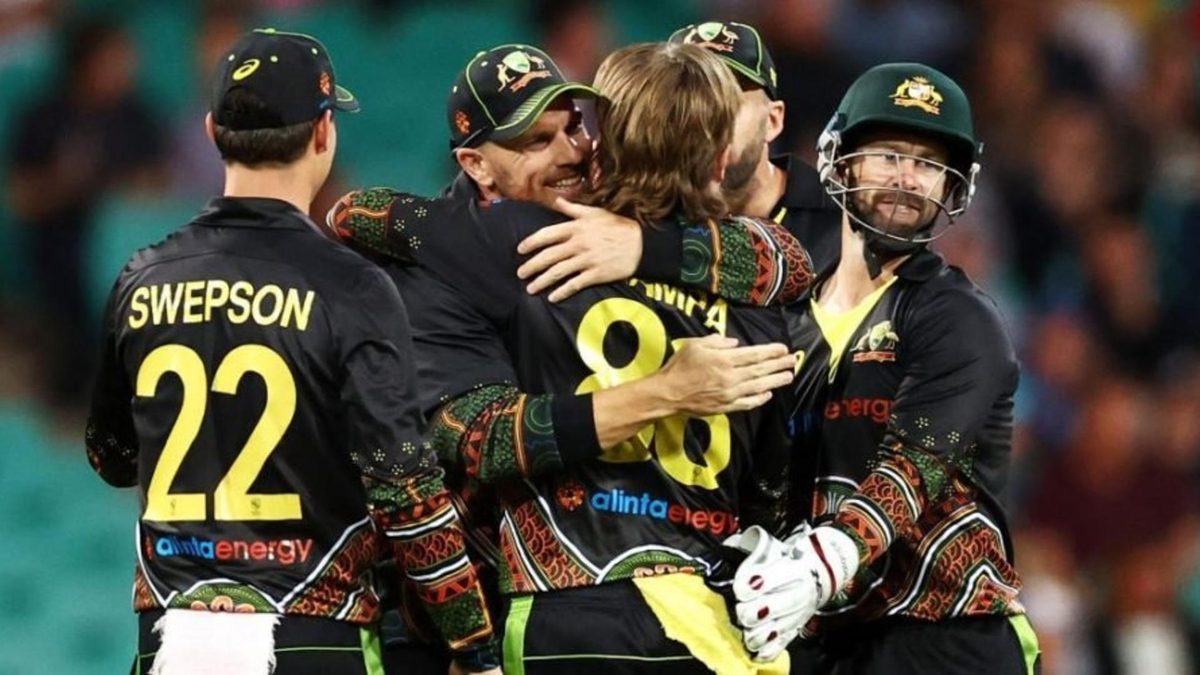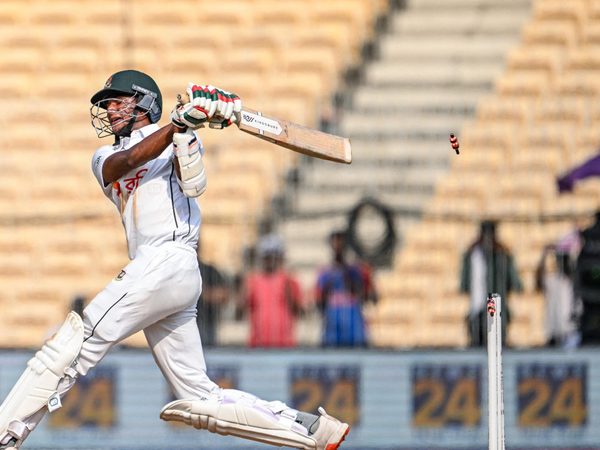
They managed to end India’s ten-match unbeaten streak, but Australia still ended up on the wrong side of the result, losing the three-match T20I series 2-1.
The team missed a few of their top players to injuries or for other reasons; David Warner was ruled out of the entire T20I leg, while Mitchell Starc and Aaron Finch made limited appearances. The series did give the opportunity to a younger group, leading to multiple new combinations both on the batting and bowling front.
Here’s the series rating for the 14 players used across the three matches, similar to the one on India players. As it turned out, it was only Australia’s unique T20 kit that possibly deserved a perfect ten.
Aaron Finch: 4/10
35 runs @ 17.50, HS: 35, SR: 125
The Australia captain’s participation was restricted to two games, as he missed the second T20I due to a glute injury. In the first game, it was his breezy 25-ball 36 that gave Australia a sound start, but he succumbed to a second-ball duck in the third T20I. His leadership was largely on-point; he effected smart bowling changes, turning to Moises Henriques in the first game and Adam Zampa in the concluding T20I at just the right time.
D’Arcy Short: 3/10
50 runs @ 16.66, HS: 34, SR: 100
Short, called in as a replacement for David Warner, struggled to get going in the series, scoring at just a run-a-ball. In the first T20I, his sluggish approach at the top slowed down Australia’s chase. In the following game, he perished in the powerplay, even as Matthew Wade, his opening partner, confidently took charge. Bumped down the order for the last T20I, he managed a 3-ball 7.
Matthew Wade: 9/10
145 runs @ 48.33, HS: 80, SR: 154.25
By far Australia’s best batsman in the series. He batted at six in the first match, but was promoted up the order in Finch’s absence, and packed quite a punch, racing to a boundary laden 32-ball 58. In the third game, the form continued as he powered Australia to a big total by batting till the 19th over, ending with his highest T20I score of 80.
Steve Smith: 5.5/10
82 runs @ 27.33, HS: 46, SR: 117.14
Smith had an average series compared to his incredible run-fest in the ODIs. Batting one-down, he crossed 25 only once, scoring a 38-ball 46 in the second game. In the other two games, the runs didn’t seem to come by easy. He was dismissed by a spinner on all three occasions.
Glenn Maxwell: 6.5/10
78 runs @ 26.00, HS: 54, SR: 150.00; 1 wicket @39.00, ER: 9.75
One of two Australians to score a fifty in the series, Maxwell was at his aggressive best in the third T20I, aided by a few reprieves in the process. He also played a brief cameo in the second game, and ended, unsurprisingly, with the most sixes for Australia in the series.
Marcus Stoinis: 5/10
16 runs, HS: 16*, SR: 228.57
After playing a starring role in IPL 2020, Stoinis would have been expected to be a crucial cog of the Australia T20I line-up against India. However, he played just the one game, chipping in with a 7-ball 16 in the second T20I, a game in which he did not bowl.
Moises Henriques: 7/10
61 runs @ 30.50, HS: 30, SR: 152.50; 3 wickets @ 10.33, ER: 6.20
In what was his first T20I series since 2017, Henriques did well in parts, scoring useful runs at No.5 and picking up three wickets in the opening game as the sixth bowler. He scored 30 and 26 in the first two games, finishing unbeaten on five in the third.
Mitchell Starc: 5/10
2 wickets @ 17.00, ER: 8.50
Starc only played in the first T20I before withdrawing from the series for personal reasons. In his only game, it was a searing yorker to Shikhar Dhawan that was a classic Starc dismissal, indicating that the left-armer was on his way to redemption after a lacklustre ODI series.
Daniel Sams: 3/10
1 wicket @ 70.00, ER: 12.35
It wasn’t a memorable debut for the 28-year-old, who leaked runs at 12.35 in the series, the highest economy rate from Australia. Playing the last two games, Sams partnered Abbott in the second T20I and became the first-change bowler after Maxwell was employed in the powerplay for the final T20I. Bonus points here for a sharp juggling catch on the boundary line in the third T20I.
Sean Abbott: 3/10
1 wicket @ 89.00, ER: 11.12
Abbott ended with the worst bowling average for an Australian bowler in the series, sending down expensive spells in the three games, and picking just the one wicket. Barring the second game, his economy was over 11, and he gave away as many as 49 runs (close to 30 per cent of India’s total) in the third game.
Andrew Tye: 4/10
2 wickets @ 39.00, ER: 9.75
Tye bowled his quota of four overs in the two games, getting a chance with Starc and Hazlewood both out of the XI. Bowling one-change in the second T20I, Tye gave away 47 runs, but bowled with more control in the final game, claiming Virat Kohli’s wicket at a crucial juncture.
Mitchell Swepson: 8/10
5 wickets @13.80, ER: 6.90
Playing only his second international series, Swepson did a fine job as the second spinner in the side, and ended with the most wickets in the series for Australia. Maintaining an economy of under seven, Swepson plucked five wickets, all of them top-order batsmen, including the prized scalp of Virat Kohli in the opening game.
Adam Zampa 7/10
3 wickets @ 25.66, ER: 7.00
Australia’s seamers were largely off-colour, putting more onus on the spinners, specifically Zampa, to deliver the goods. The leg-spinner bowled tidy spells throughout, ending with an economy of 7, and making crucial dents in the Indian batting throughout the series. His dismissal of Hardik Pandya in the third T20I possibly turned the game Australia’s way.
Josh Hazlewood 2/1o
0 wickets, ER: 9.75
After a successful ODI series where he claimed Virat Kohli’s wicket thrice, Hazlewood was left out of the T20I unit after just one game, giving away 39 runs from his four overs in the series opener. With Starc also out, Australia went ahead with a new-look bowling attack for the next two games, possibly keeping Hazlewood fresh for the Test series.








